Plaque Inscriptions
Home
Go Back to Step 9: The Inscription
Return to the Project Overview
Move on to Step 9: Columbarium
Epitaphs
You will need to write an inscription for your monument. The following
is a guide to help you decide what to put on it. Since you cannot
write an autobiography, your tomb inscription will need to tell the future
why you were important and made a difference.
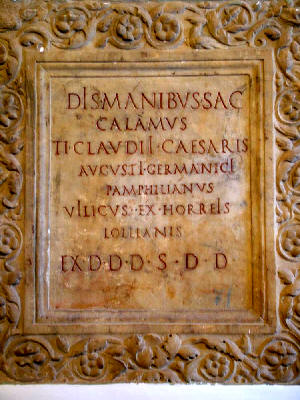 Invocation to the Spirts of the Dead: Most inscriptions
include the Latin phrase "Dis Manibus", "to the Spirits of the
Dead". You can include this as well. You can abbreviate it "D M"
as well. You can also use "Rest in Peace", (requiescat in pace)
which also appears on inscriptions. It is abbreviated R.I.P.
Invocation to the Spirts of the Dead: Most inscriptions
include the Latin phrase "Dis Manibus", "to the Spirits of the
Dead". You can include this as well. You can abbreviate it "D M"
as well. You can also use "Rest in Peace", (requiescat in pace)
which also appears on inscriptions. It is abbreviated R.I.P.
Names of the people involved: the general formula is "to
[person's name]; [second person's name] made this for his/her
father/mother/brother/sister/child, etc." You can also show that the
stone is made for both people: "to [person's name]; [second person's name]
made this for his/her father/mother/brother/sister/child, etc. and for
himself". You can also have multiple people mentioned, "To [first
person], [second person], [third person], and [fourth person]; the gens
[family name] made this monument for themselves." Inscriptions
also usually include what is called the "filiation", the listing of the name
of the person's father, e.g. "Titus Livus Andronicus, son of Gaius".
Virtues and epithets: in order to show how they fit with
the traditional view of a good Roman, funerary inscriptions usually included
reference to virtues or epithets. For example, "loyal", "obedient",
"well-deserving", "brave", etc. These would usually appear after the
name.
Municipal career: it is expected that an aristocrat would
list the municipal offices held, or at least the last office held. For
example, "duovir, quaestor, aedile". Usually they would list the last
held first (so that the most prestigious office would be closest to the
person's name. It is also important to include any prestigious titles
like "patron of the colony" or the priesthoods. It might also be good
to include the information about your position in your guild.
Noteworth information on life: you might also want to
include other interesting information about your life, like details about
your games.
Size of burial plot: Romans frequently say on their
tombstone how large the burial plot was. They say something like "X
feet in width and Y feet in depth" where "width" (in fronte) refers
to how wide the plot is along the road and "depth" (in agro) refers
to how far back away from the road the plot runs.
The following are some examples of inscription plaques to give you some
ideas on the visuals:
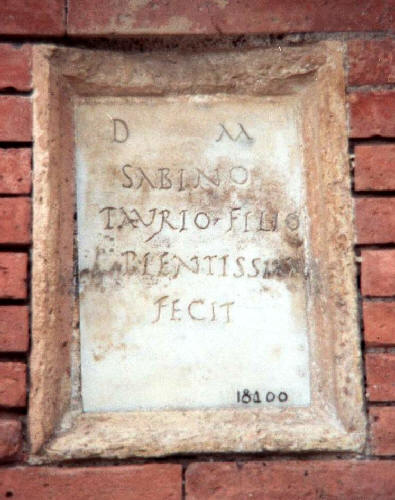
A small, simple plaque |
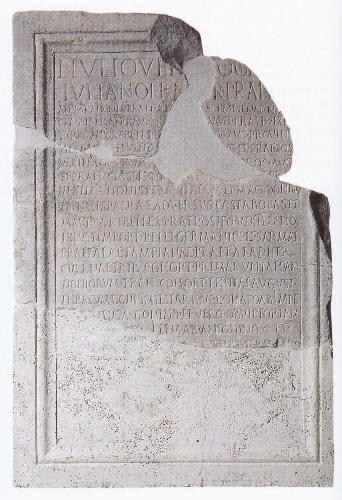
A large plaque commemorating the public career of an important member of
the equestrian aristocracy |
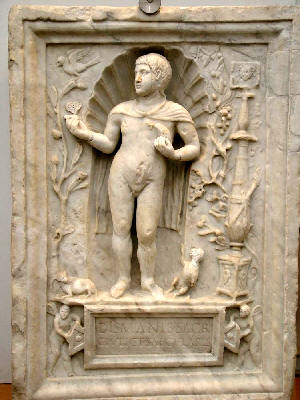
A small plaque with extensive decoration and a very small space for the
inscription |
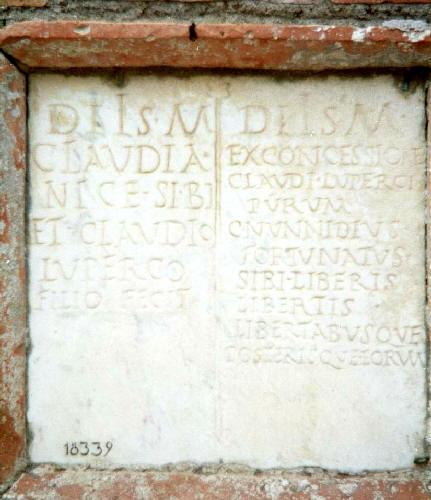
A plaque with two side-by-side inscriptions on a single plaque |
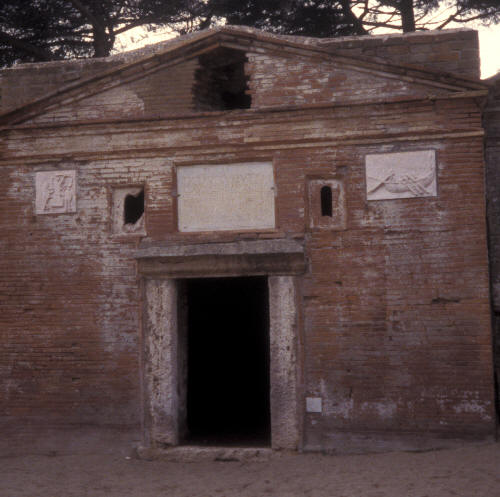
A Columbarium with the inscription plaque over the door |
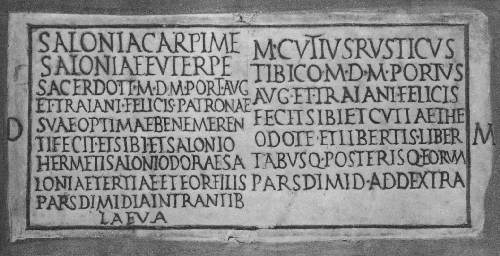
A double inscription plaque commemorating a husband and a wife |
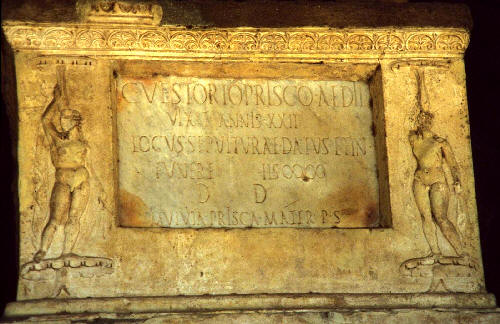
A decorated plaque commemorating a boy aristocrat from Pompeii |
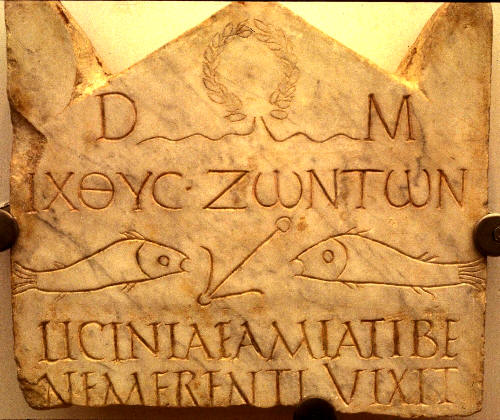
A cippus commemorating a Christian woman |
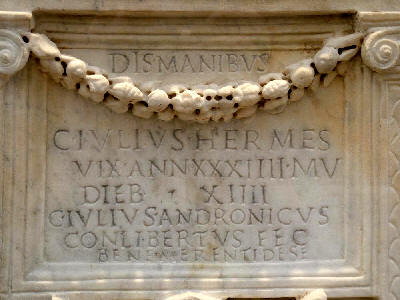
Inscription from a funerary altar commemorating a freedman |
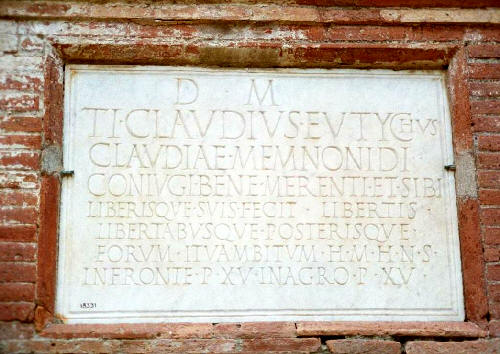
Closeup of a plaque from the front of a columbarium; the tomb
plot dimensions are given on the bottom |
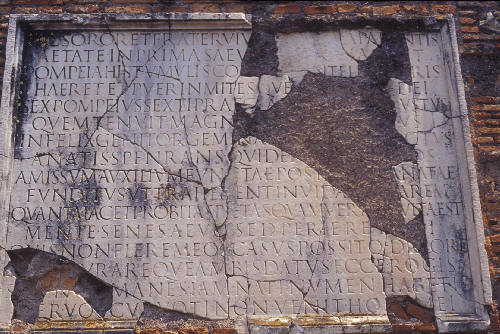
A large plaque from the front of a tomb on the Via Appia in Rome |
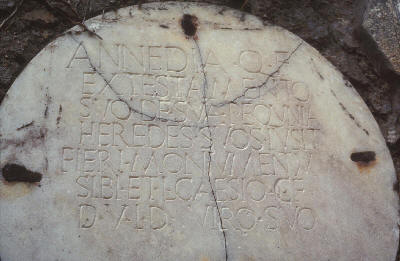
A semi-circular plaque from a tomb in Pompeii |
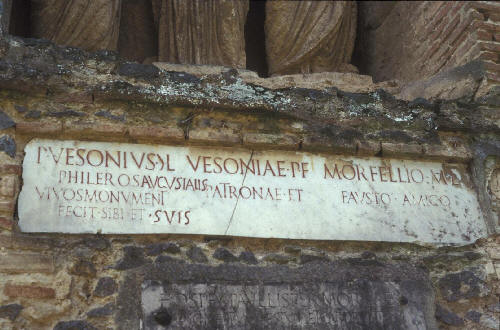
Inscription listing three people beneath the portraits of the three
people |
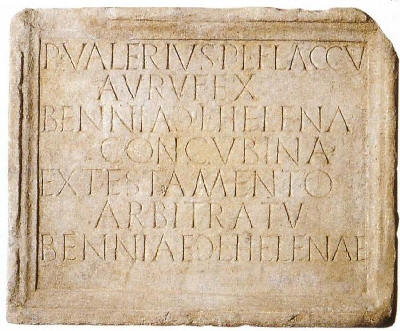
A medium plaque commemorating a gold clothing maker |
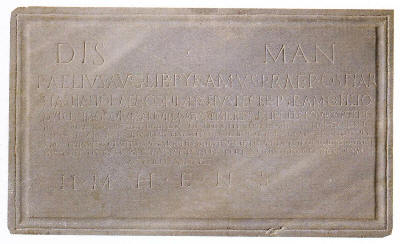
A medium plaque from a tomb in Rome |
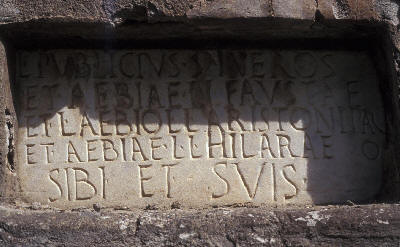
A small plaque dedicated to four people |
|
 Invocation to the Spirts of the Dead: Most inscriptions
include the Latin phrase "Dis Manibus", "to the Spirits of the
Dead". You can include this as well. You can abbreviate it "D M"
as well. You can also use "Rest in Peace", (requiescat in pace)
which also appears on inscriptions. It is abbreviated R.I.P.
Invocation to the Spirts of the Dead: Most inscriptions
include the Latin phrase "Dis Manibus", "to the Spirits of the
Dead". You can include this as well. You can abbreviate it "D M"
as well. You can also use "Rest in Peace", (requiescat in pace)
which also appears on inscriptions. It is abbreviated R.I.P.














